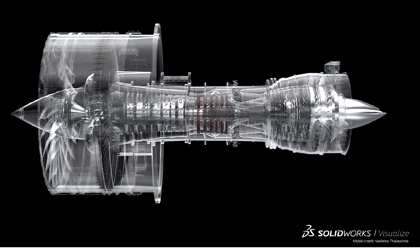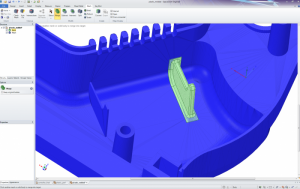Prosthetic limbs have been printed for years. So when a global crisis hit, additive manufacturing was ready to contribute quickly to life-saving equipment.
Jean Thilmany, Senior Editor
In the early days of the pandemic, engineers quickly designed and printed medical protective gear and respirator valves. The response demonstrated the lifesaving potential the technique could have in the medical realm. But many in the field already knew the potential 3D printing has to enhance patients’ quality of life. For years, the method of creating a 3D object by depositing a material in layers has been used for customized prosthetic limbs.
While many printed medical devices are still under investigation, patients who wore early 3D-printed limbs—only about 20 years ago—recognize how far additive manufacturing has come in healthcare in that short time. Scientists have even established a new field—3D bio-printing—that explores everything from the prosthetic iris to an artificial heart to the printing of customized pharmaceuticals.
But bio-printing couldn’t exist without computer-aided design. A medical device CAD model—whether a prosthetic leg or a respiratory mask—exists before the physical prototype does, the same as in other manufacturing processes. Across all types of manufacturing, the engineer redesigns and analyzes a model many times before creating a physical prototype.
Rather than feeding out instructions to, say, a CNC machine, the CAD files used for additive manufacturing instruct the printers on how much material to deposit at particular locations.
That precision along with the range of materials 3D printers can use, even living tissue, drives medical research across all categories.
For instance, doctors at Northwestern University announced in June that they’d used images of volunteers’ irises, Photoshop, and AutoCAD software to create a prosthetic iris. It’s intended for people with aniridia, a rare condition in which a person is born without an iris. The iris controls pupil size in response to light, so a prosthetic iris could help its wearers see better in all types of light conditions.
Meanwhile, researchers at the Yonsei University reported their work on a 3D-printed cosmetic, prosthetic eye through use of mapping, design, and printing technology. The paper appeared in the February 2021 journal Korean Ophthalmology.
Studies like these are an extension of one of 3D printing’s first medical uses, the creation of customized, artificial limbs. When the technique was still new, doctors discovered additive manufacturing created better-fitting, lighter, stronger and more flexible prosthetics than traditional methods; and in much less time.
Printed limbs can be closely customized to the wearer through the use of imaging systems like computer-aided tomography, which exactly maps the patient’s body, often the remaining stump of a leg, where the artificial limb will attach. The CAT scans are sent to a CAD system where they’re converted into digital model of the body. Then, engineers can create a prosthetic model that exactly fits the shape of the body.
When the CAD model is complete, the software sends instructions to the 3D printer, which prints the customized prosthetic by building it up, layer upon layer of a material such as plastic or metal.
The result is a much better fit for patients, a lighter prosthetic, and—in many cases—a more affordable device, say researchers like Hugh Herr, the director of the Biomechatronics Group at the Massachusetts Institute of Technology.
An artificial leg printed leg a decade ago—even some printed now—looks more like a traditionally created prosthetic limb, which is die-cast of aluminum or titanium. Patients who wear these standard limbs may move awkwardly due to the device’s limited range of motion. The people who wear them may have difficulty with walking, running, and picking up objects, Herr says.
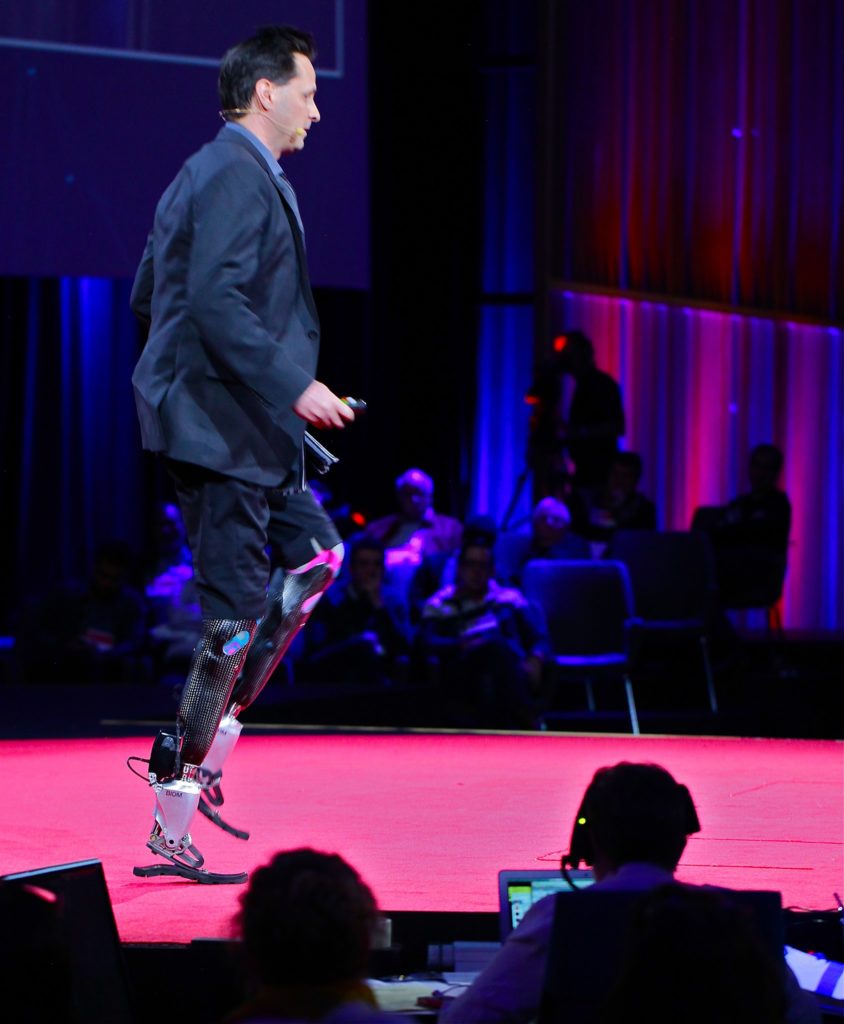
Today’s myoelectric prosthetics are fitted with robotics and sensor technologies so their movements closely mimic that of a human hand or foot. Through more natural movement, wearers will have an easier time walking, running or picking up and carrying objects, movements that today can be somewhat awkward due to the limited motion of the prosthetic, Herr says.
In today’s parlance these are “bionic limbs,” so-called because their capabilities are so much greater than the early 3D-printed limbs.
Herr’s work has been instrumental to bionic limbs. But he wants to extend the field even further. He’s helping create “biohybrid” prosthetics that work in harmony with the humans who wear them.
His mission is personal as well. Herr lost both legs to frostbite while rock climbing in New Hampshire’s White Mountains in 1982. He still climbs. In fact, Herr says he climbs better with the legs he’s recently developed than he did before the accident. He expects future advances in prosthetics to help him climb with even more speed and agility.
Also in the near future, wearers may well control the prosthetic limbs the way most everyone controls their natural arms and legs; without a thought. Or rather, with a subconscious thought. Researchers at Johns Hopkins University, for example, are studying brain-machine interfaces to control movement of prosthetic limbs and include touch perception.
Additive manufacturing will keep up with these advancements, Herr says.
Medical printing in a pandemic
Printed prosthetic limbs showed the medical community that 3D printing had a place in healthcare. And thankfully so; as the year 2020 proved that additive manufacturing could save lives.
When the COVID-19 pandemic froze traditional supply chains, open-source CAD systems and 3D printers were able to get devices into the hands of healthcare providers who faced shortages in medical and testing equipment and in protective gear, says Aamir Nazir, a researcher at the National Taiwan University of Science and Technology’s High-Speed 3D Printing Research Center. He and fellow researchers studied the rise of the rise of 3D printing and smart CAD during the shutdown, publishing their findings in the October 2021 Journal of Manufacturing Systems.
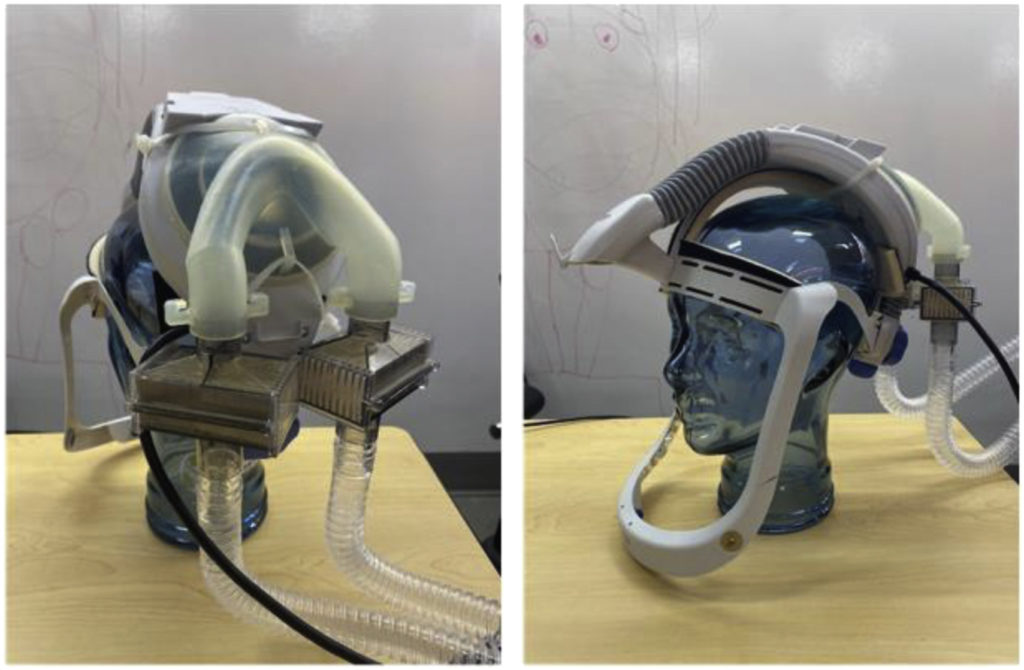
When the lockdown began in earnest, “it became obvious very fast that traditional manufacturing and supply techniques weren’t going to work,” Nazir says.
“This created the need for geo scattered, small, and rapid manufacturing units along with a smart computer aided design facility,” he says.
The medical devices printed during this time helped saved lives. The devices could be designed and printed much cheaper, and in much less time than with traditional manufacturing methods. Not to mention, the devices could be made right on the spot, or nearby and available immediately, no shipping required, Nazir says.
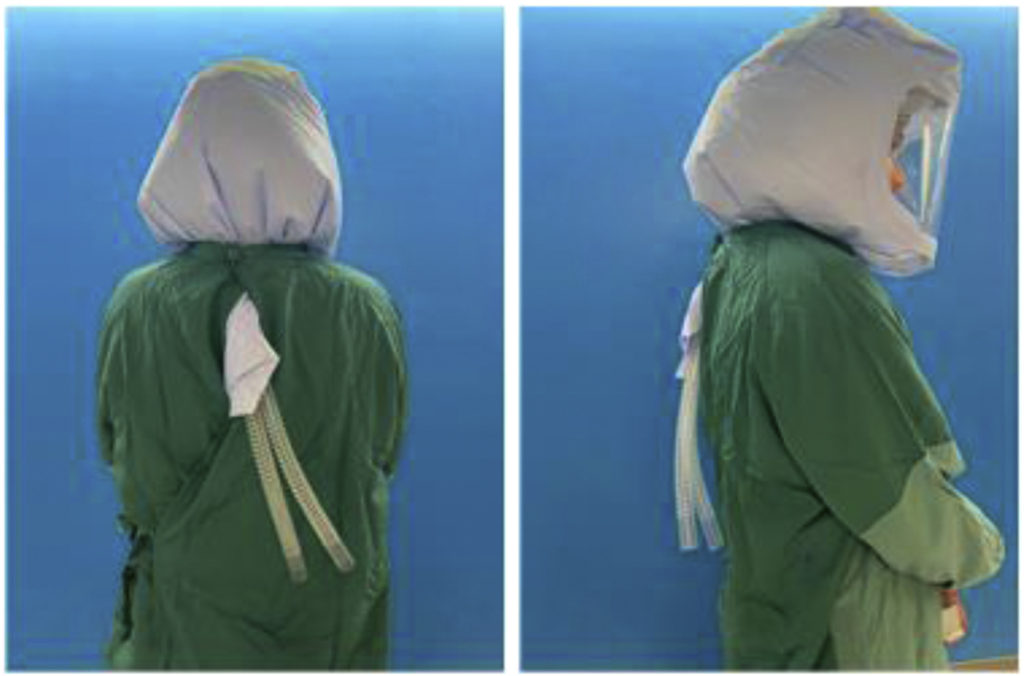
Medical manufacturers helped the cause by providing 3D printable models on the cloud, rapidly scaling the movement toward 3D cloud manufacturing, he adds.
In those early days of the pandemic, a team of Italian engineers stepped up to make a 3D printed version of a vital respirator valve, a Reuters news report stated.
A hospital in Chiari, an area in northern Italy hit hard by the pandemic, urgently needed valves for the respirators that kept many patients breathing. When the valves’ manufacturer couldn’t get them out in time, Christian Fracassi volunteered his engineers at Isinnova, a 3D printing company he founded.
His staff of 14 engineers immediately began tinkering with the design of the Venturi valve, a small but important valve that kept respirators functioning.
Fracassi took the resulting CAD file and a 3D printer directly to the hospital, discovered it worked, and quickly printed 100 valves. That evening, at least 10 patients were using respirators fitted with the printed valve, Reuters reported.
The Italian hospital wasn’t alone.
The need for the Venturi valves was great. By March 18, more than 100 medical facilities and engineers had asked Percassi to share his CAD file. He couldn’t share the file, he told them, the correct course of action would be to contact the manufacturer first.
In Italy, 3D-printed parts have to be certified. But emergency rules in that country waived the requirement, according to 3D Printing Media Network, which started an Emergency AM Forum to help share designs and ideas during the crisis. Other countries may not have similar waivers, Percassi reasoned.
The next day engineer Filib Kober posted a free model of the Venturi valve he’d made with the GrabCAD open-source system.
Within a week, the model had been downloaded many times and was already being updated. The Kober model couldn’t be printed on the smaller, desktop printers. But individual “makers” only had access to desktop printers, says engineer Useriu Daniel. By the end of March, he’d released his valve-design iteration, created with Catia V5 software. Daniel is an engineer at Romanian researcher organization INCDT-COMOTI.
His updated design can be made with through fused deposition, the method used by desktop printers, he says. The model also had a new feature and the inner surfaces were optimized for fluid flow.
Other engineers quickly designed parts that could be printed or could be integrated with existing designs; and even with existing devices. Engineers at Duke University collaborated with students and researchers at the Pratt School of Engineering to retrofit arthroplasty helmets—a surgical hood. The updated hoods safely shielded surgeons’ faces while still allowing them to wear headlights and loupes directly on their heads.
The engineering team created a manifold that could be 3D printed and incorporated onto existing helmets. CAD allowed for the quick testing and redesign needed for the project, says Melissa Erickson, a spine surgeon at Duke University who helped spearhead the project.
“The engineering team designed and created the final adapter just in 12 days. They were able to come up with different design alterations while testing to make the final manifold, which is only possible because of 3D printing,” Erickson says.
It’s hard to believe, with these quick-thinking creations at a time of crisis, that additive manufacturing is still in its early days in the medical field. Watching a video of Herr scale a mountain on his “bionic legs” does nothing to dispel that.
Though the future of the field is almost unimaginable, Herr thinks he’s got a pretty good handle on the cutting edge of the present. By giving wearers access to these new prosthetics, he’s giving them access to the part of themselves that moves naturally through the world.
By opening up lives like this, by helping to save lives, 3D printing and CAD is on its way to becoming a big part of healthcare.



